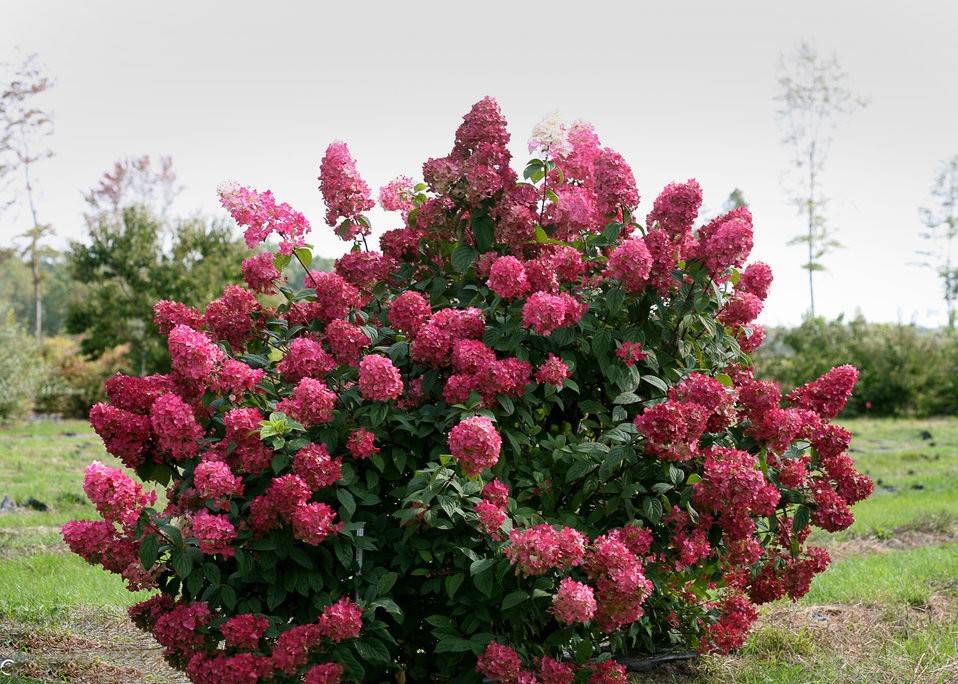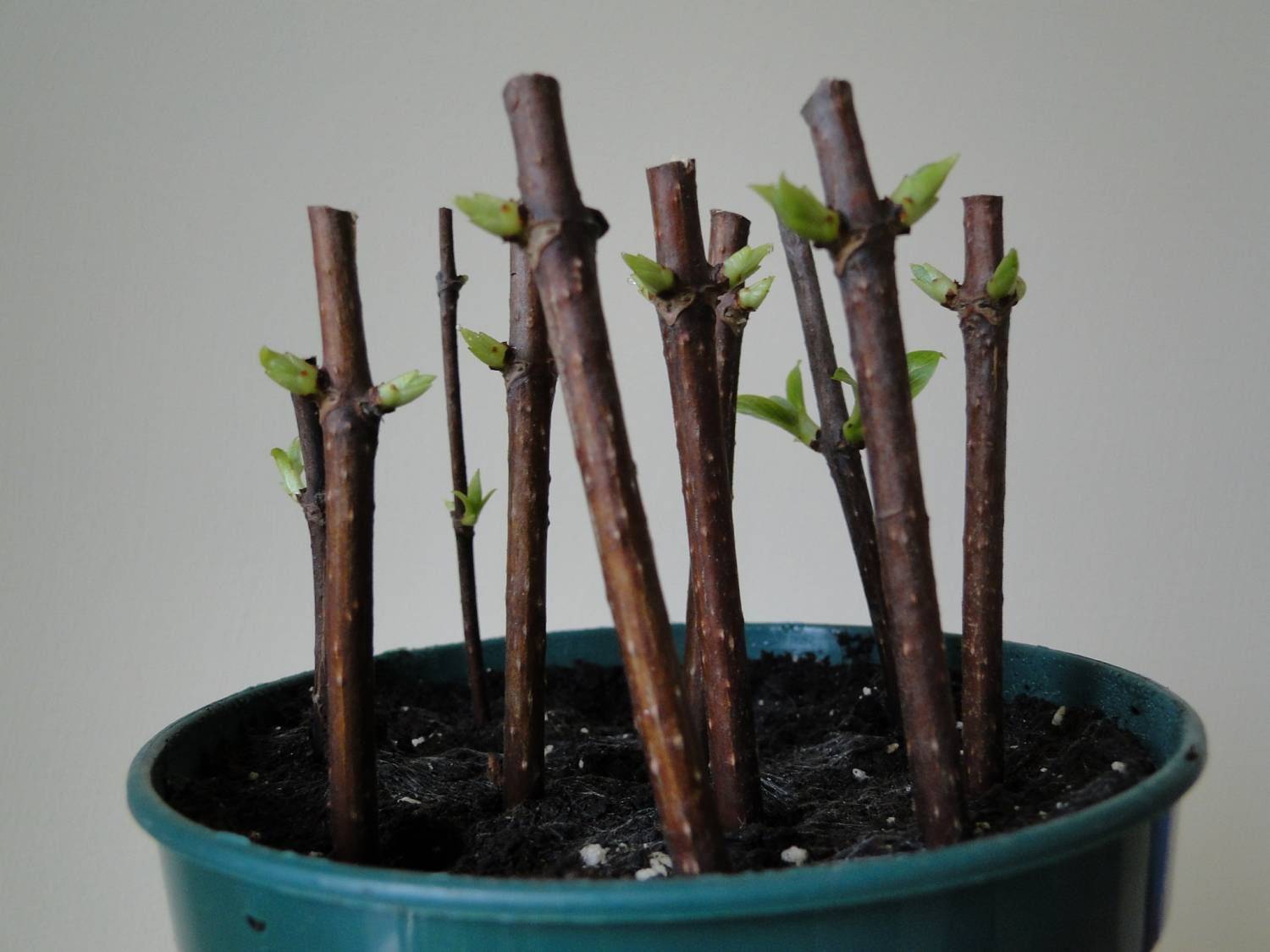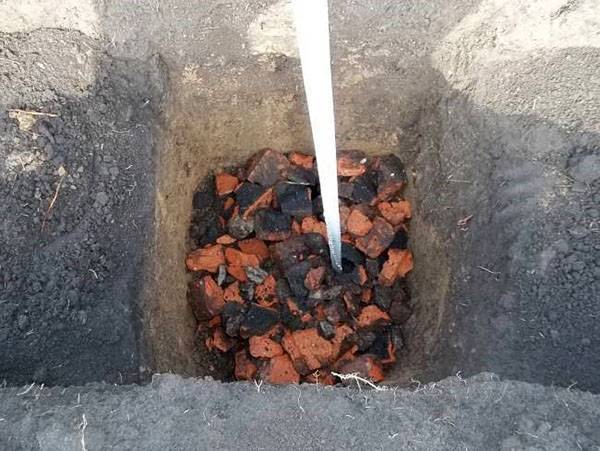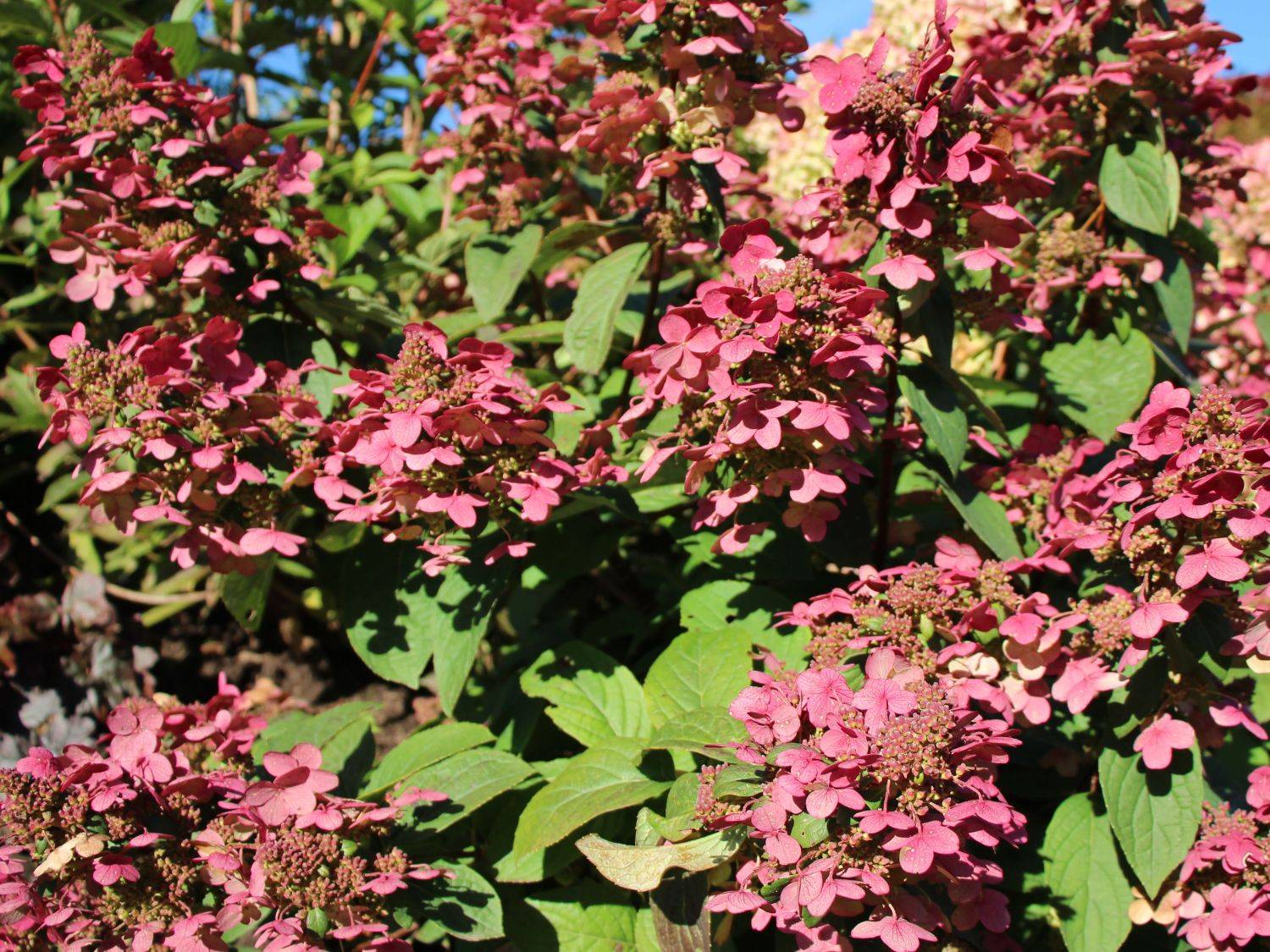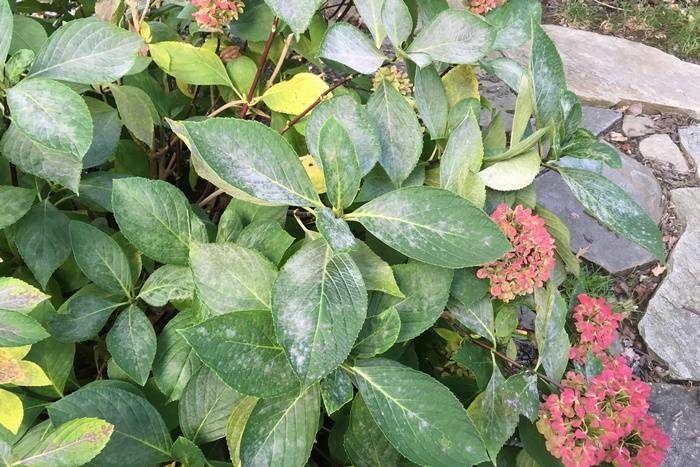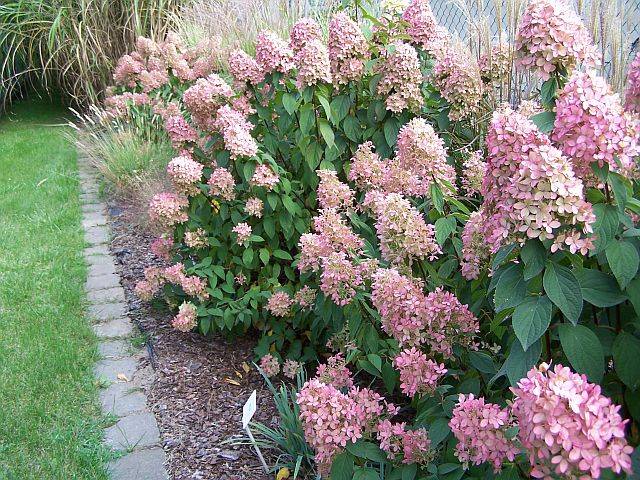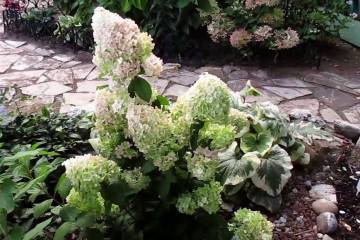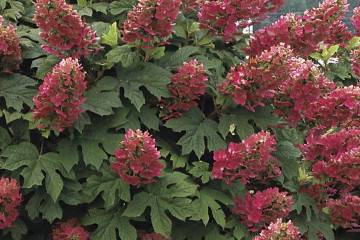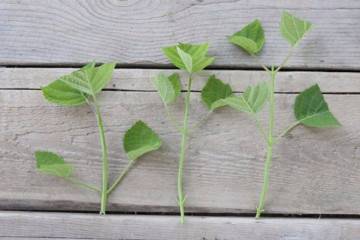Hydrangea Magic Candle - care and planting of varieties in open ground
Content:
Hydrangea Magic Candle or Magic Candle is the most beautiful type of panicle hydrangea. With its long, lush bloom, it is gaining more and more followers. Large, lush pyramidal panicles are an adornment of any garden, parks, alleys.
Botanical description of hydrangea Magic Candle
This botanical species belongs to the Hortensia family. In its natural environment, it grows in China, Japan and Sakhalin. Favorite places - edges, rare deciduous forests. The shrub of the Magical Candle variety (hydrangea paniculata Magical Candle) is a drooping perennial.
Hydrangea Magic Candle is a tall shrub. Height reaches 2 m. The bush is very dense, thanks to a large number of strong stems and abundant foliage. Moreover, it is quite compact.
The leaf blade of the culture is dark green, oval-pointed in shape and with jagged edges. The inflorescences consist of a large number of small flowers. The size of the bud does not exceed 2.5 mm in diameter. The flowers are wonderful honey plants.
The series also contains the following varieties of panicle hydrangea:
- Magic Himalaya;
- Magic Moonlight;
- Magic Pinkerbell;
- Magic SummerSnow;
- Magic Sweet Summer;
- Magic Starlight;
- Magic Fire (Fire).
In the description of hydrangea Magical Candle, inflorescences occupy a special place. Tight panicles are 30 cm or more. At the bud phase, the candle is pearl-cream, opening up, each bud acquires a pale pink hue. By the end of flowering, the inflorescences blaze with a dense scarlet color.
Hydrangea Magical Candle achieves optimal decorative effect on fertile, moist, loose soil. Feels great in an open sunny area and in partial shade. The cold endures calmly. The stems of the current year are also rapidly recovering. This is very important, since the inflorescences are formed on them.
The Magic Kendle hydrangea begins blooming in its fourth season and remains covered with flowers from June to October.
Reproduction methods
The most commonly used propagation methods for Magical hydrangea are cuttings and rooting of cuttings.
Layers
The second option is the easiest to use. There is no need to separate part of the shoot, prepare a special substrate, take care of it like seedlings.
The process of getting a new plant goes like this:
- A shallow groove is pressed next to the mother bush.
- One of the lower, healthy stems fits into it.
- In several places, the shoot is pinned to the bottom of the groove.
- The entire cut is sprinkled with earth and watered.
During the summer, the cuttings will be watered and fed together with the mother plant. The top of the cut should protrude above the ground. Rooted bushes are not transplanted until next spring. They should be covered for the winter.
Cuttings
The second easy option for breeding hydrangea paniculata Magic Candle is cuttings.
Planting material can be dug under the bush. Before that, they should be treated with a root formation stimulant; Kornevin, Epin are suitable. Sections of branches up to 20 cm in length are deepened into the ground by 2 buds.
Landing in open ground
First you need to choose a place for disembarkation. This should be a sunny area or a place in partial shade.The composition of the soil should be adjusted to a standard suitable for hydrangeas. The culture prefers a slightly acidic or neutral environment. It is better to enrich the soil in advance with humus and sand.
Suitable for planting in early spring or late autumn. A planting hole for a young bush is dug out twice the size of the root ball. The distance between the seedlings should be at least 1.5 m. A drainage layer is laid out at the bottom of the hole: expanded clay, broken brick, river stones.
Further, a layer of soil mixture is poured onto the drainage, a seedling is installed, the earth is poured and compacted. Watering and mulching completes the planting.
How to care for a shrub
If a healthy shrub is planted in the right place, in a suitable soil, further maintenance is minimal. Usually, the bush consistently pleases with lush flowering.
Watering
To maintain good condition, the Magical Kandle hydrangea needs abundant watering. Depending on the age, and hence the size, up to 40 liters of water is poured onto one plant at a time. The crop is very sensitive to lime in the water, so it is recommended to use only settled water. Ideally, this is rainwater. In dry summers, you need to water the bushes every week, preferably in the morning or evening. Sprinkling crops are also encouraged.
Watering should be combined with weeding, loosening and mulching of the root zone. Peat or sawdust mulch will help retain and retain moisture.
Top dressing
As a richly flowering plant, hydrangea is highly dependent on feeding. In this case, the following order must be observed:
- In early spring. There will be enough organic matter: mullein, bird droppings. To build up green mass, the flower needs nitrogen.
- At the beginning of budding, i.e. the second decade of April. At this stage, complex compositions containing superphosphate, potassium, urea are suitable. The proportions of elements per bucket of water in grams: 35:35:25.
- In July. This dressing affects the duration of flowering. This time potassium and magnesium are required in the fertilizer.
- Towards the winter. Top dressing at this time is designed to complete the growing season and increase the frost resistance of the bush.
Excessive organic matter can lead to uncontrolled growth of hydrangeas. The branches may not support the weight of the inflorescence panicles. Fertilizer should not contain nitrogen compounds.
Correct pruning
Hydrangea Magic is prized for its voluminous crown. Regular pruning is required to maintain the desired shape and eliminate thickening.
A cardinal haircut is carried out in early spring. All damaged, dried branches are removed, weak, improperly growing shoots are cut out. From the remaining, the strongest 9-12 stems are selected, cut off so that 5-7 buds remain on them. Remaining after these procedures are also deleted.
Before the onset of cold weather, an autumn shaping haircut is carried out. Faded inflorescences, damaged and weak shoots are removed.
Protection from pests and diseases
The decorativeness of the culture can be threatened by both flaws in care and diseases, pests. For example, when the root zone overheats, the bush fades, grows dull, and when the soil is too alkalized, the foliage turns yellow.
Of the diseases, hydrangea is susceptible to various rot, powdery mildew, tracheomycotic wilting. Gray rot affects the bush itself, white, as well as tracheomycosis, leads to decay of the roots.
For treatment, various fungicides are used, such as Aktellik, Aktara, Fufanon.
Pests can also affect hydrangea. The most active hobbyists are spider mites. No less interest in the plant is shown:
- snails;
- aphid;
- bedbugs;
- pennies.
Insects feed on plant sap and reproduce.If you do not take action, the colonies grow and can completely destroy the bushes.
Winter hardiness of the Magical Candle variety
Panicle hydrangea is quite frost-resistant. Adult plants can easily tolerate frosts down to -30 ° C.
For very young bushes, frosts are dangerous. It is best to transplant them into a pot and bring them home until spring. If this is not possible, they should be carefully insulated. Most of the attention is paid to the roots. For their safety, you need to insulate the trunk circle of the bush.
Suitable for high mulching:
- straw;
- humus;
- dry foliage;
- needles.
You can use what is available from this list or a mixture of all. The height of the mulch is at least 25 cm.
The bush itself also takes cover. To do this, you can collect all the branches in a bunch and wrap with burlap (agrofibre, tarpaulin, rags). To protect from the wind, the ends of the covering material are recommended to be fixed with stones, bricks, and pinned to the ground with a twig.
You can divide the bush into several bunches and tie each one to the ground. The fixed bunches can be overlaid with spruce branches, covered with a box, covered with dry foliage.
Hydrangea paniculata Magic Candle is suitable for decorating any garden area, parks, alleys, etc. It can act as a central figure or be part of a design composition. But for optimal decorativeness, you should adhere to the rules of planting and caring for this beautiful plant.
